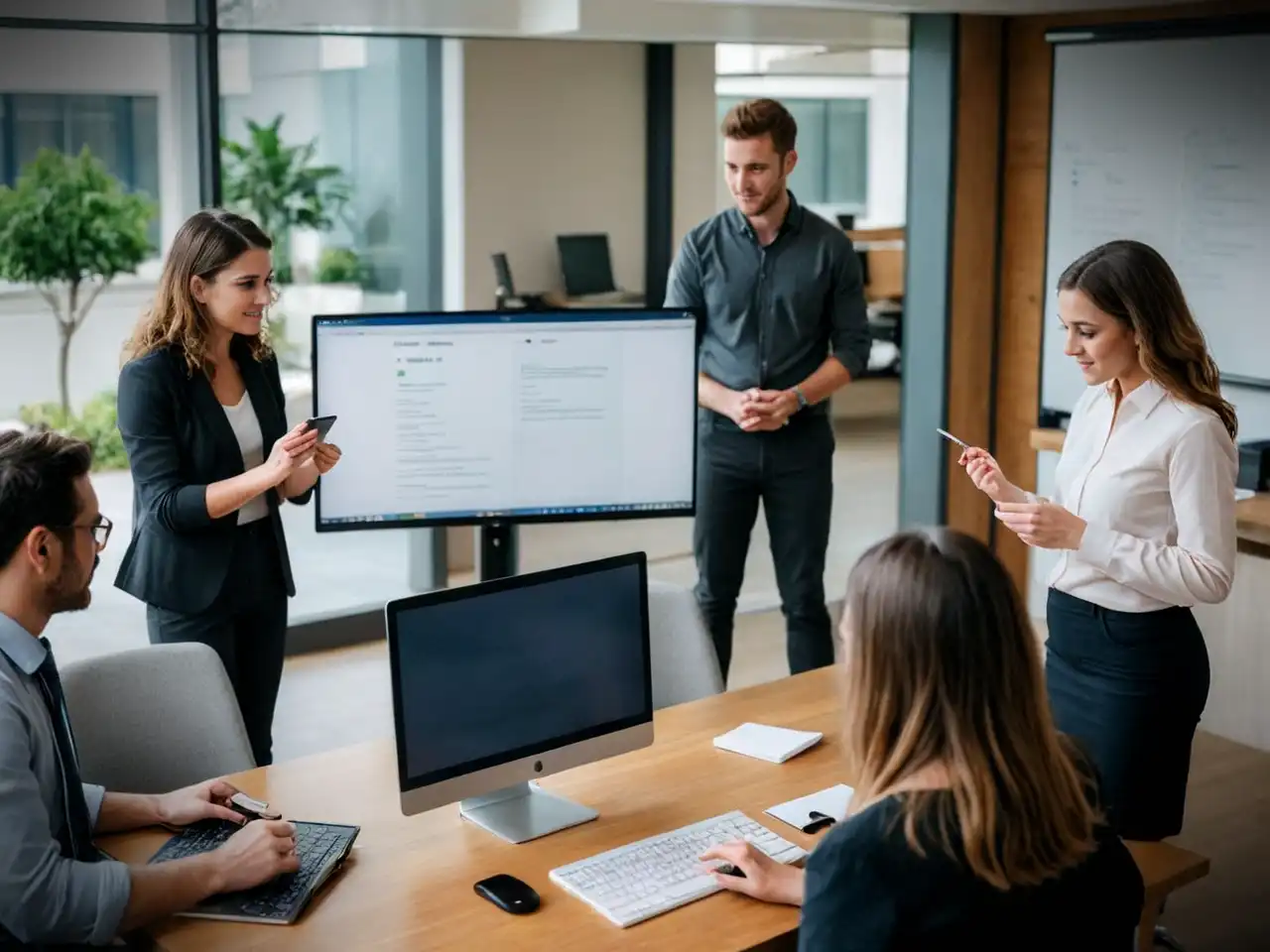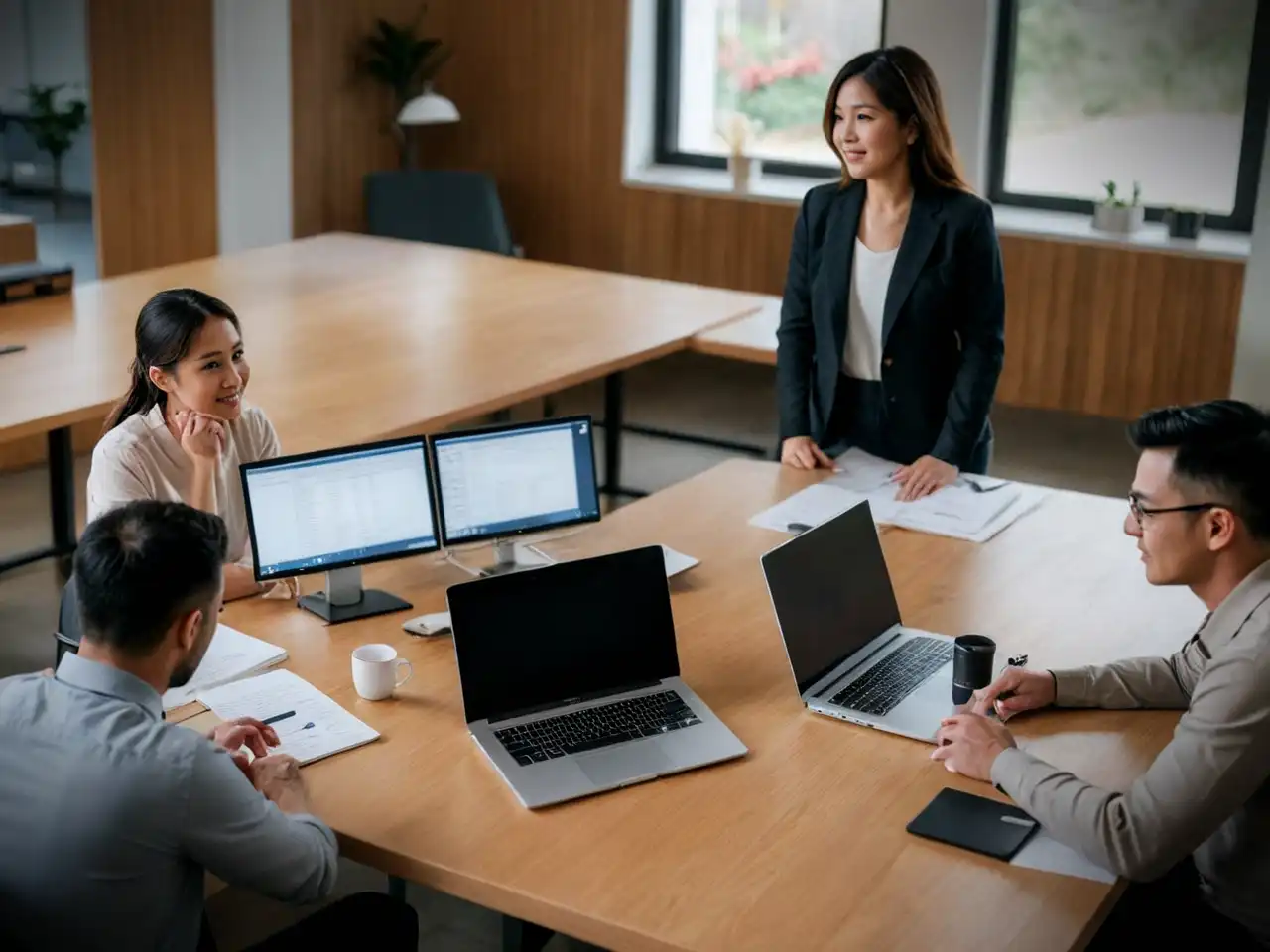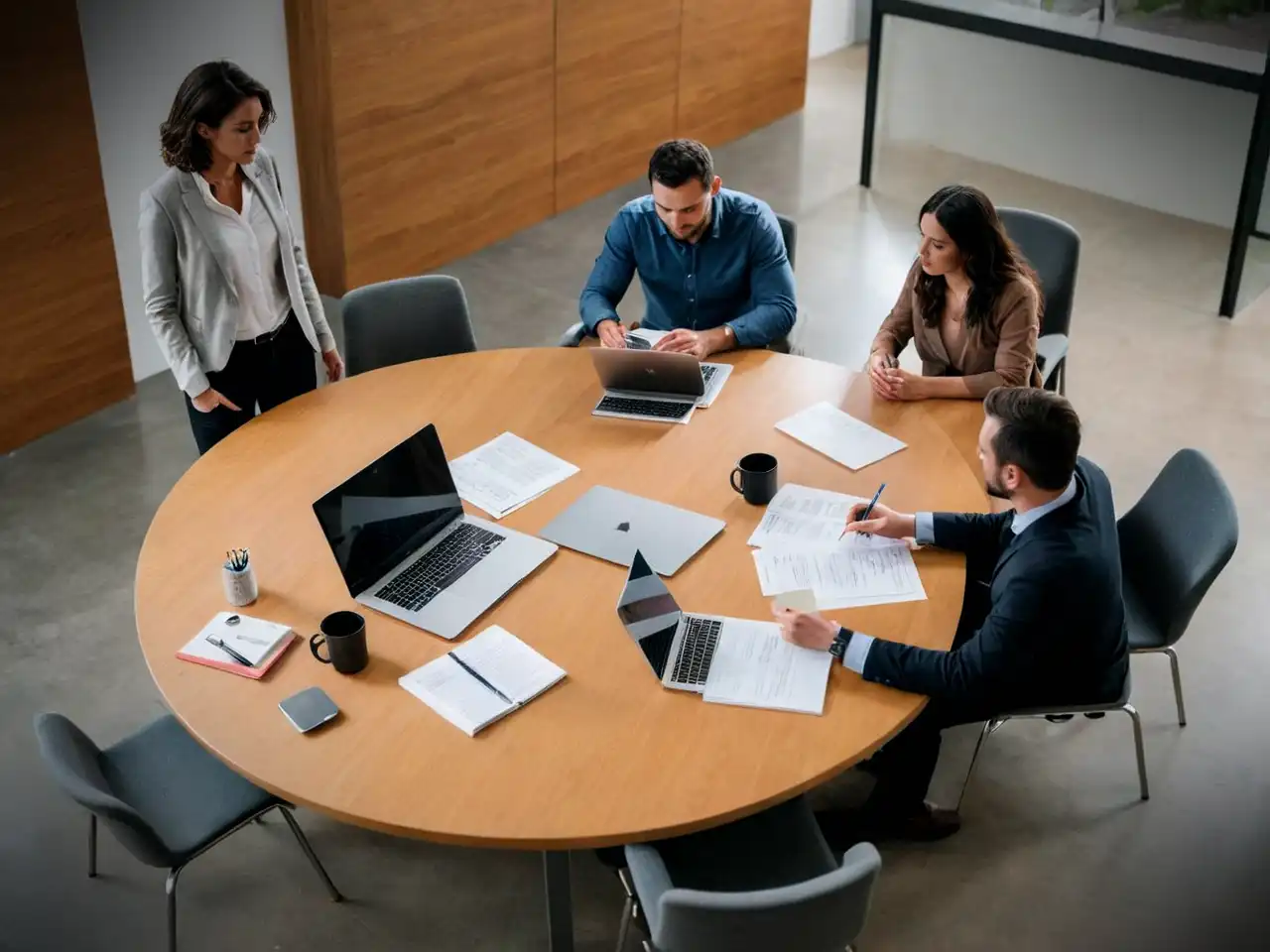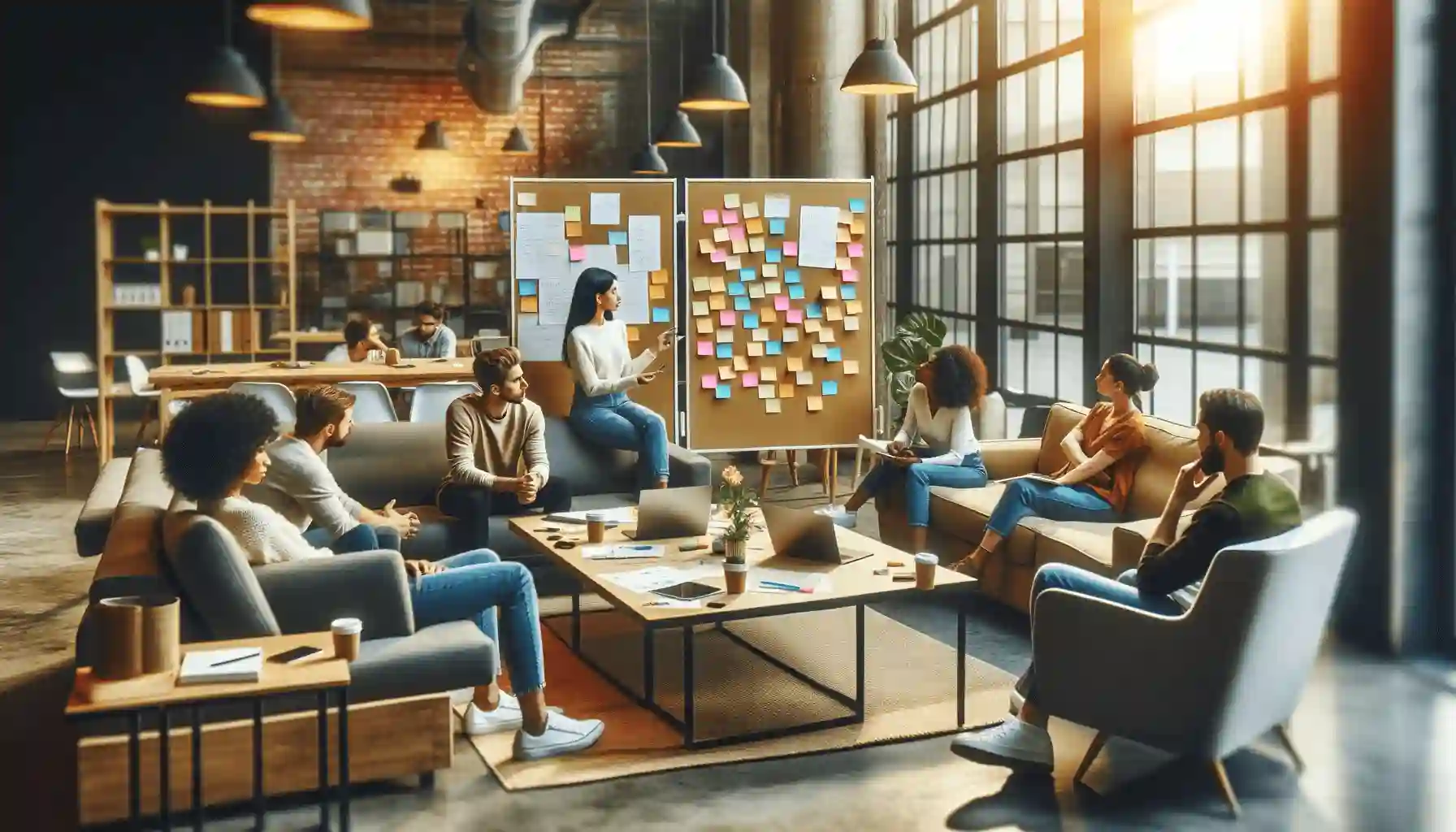Lunch Meeting
This guide will walk you through the essential elements of use lunch meeting to keep your attendees aligned and engaged.
Try Lark for Free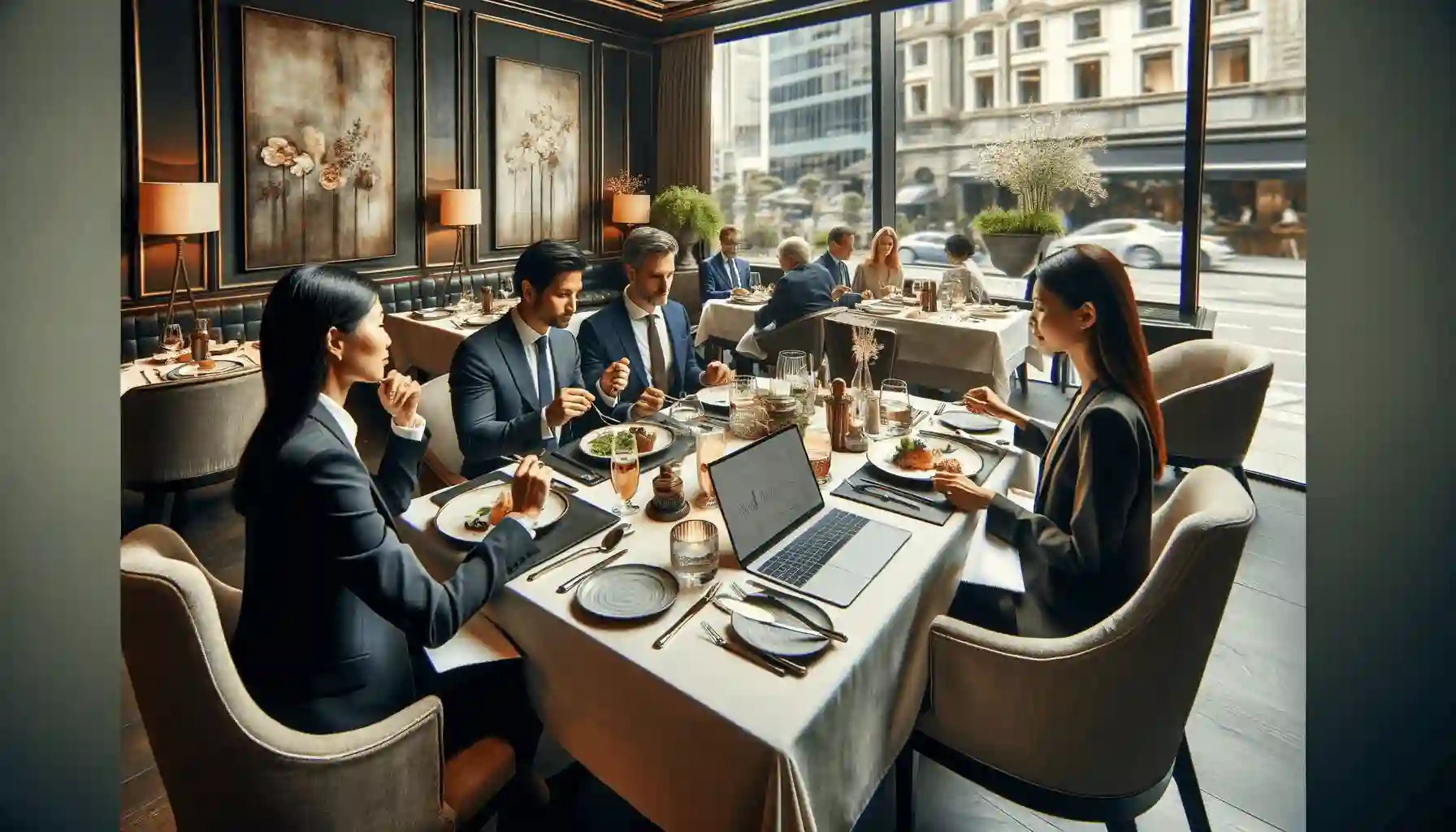
Lunch meetings, often held during the workday, offer a convenient way for teams or colleagues to gather, discuss important matters, and enjoy a meal together. When planned and executed effectively, lunch meetings can enhance collaboration, boost morale, and contribute to achieving organizational goals. In this comprehensive guide, we'll explore the nuances of hosting successful lunch meetings and making them a valuable part of your work culture.
Use Lark Meetings to turn meetings into true collaborative experiences.
What is a lunch meeting?
Understanding Lunch Meetings
A lunch meeting is a gathering of individuals within an organization or team that takes place during the lunchtime hours. These meetings typically involve discussions, decision-making, or presentations while sharing a meal. Lunch meetings can serve various purposes, such as project updates, brainstorming sessions, team-building, or client meetings.
Goals of a lunch meeting
Achieving Objectives While Nourishing Connections
The primary goals of a lunch meeting include:
- Information Sharing: Sharing updates, insights, or decisions.
- Networking: Building relationships and fostering team collaboration.
- Effective Use of Time: Combining work and nourishment during the lunch break.
Who should attend a lunch meeting?
Key Participants
The composition of attendees for a lunch meeting depends on its purpose. Common participants include:
- Team Members: Colleagues gathering for team discussions or updates.
- Clients or Stakeholders: Hosting clients or stakeholders for business-related meetings.
- Project Teams: Focusing on project-specific discussions or planning.
Learn more about Lark x Meetings
Topics, agenda, and structure of a lunch meeting
Structuring the Meeting
A well-structured lunch meeting typically includes the following components:
- Welcome and Opening: Setting the tone, objectives, and meal arrangements.
- Discussion or Presentation: Addressing the main topic or agenda.
- Mealtime: Enjoying a meal or refreshments while continuing discussions.
- Q&A or Open Discussion: Encouraging questions, feedback, and input.
- Decision-Making: If needed, making decisions or assigning action items.
- Wrap-Up and Next Steps: Summarizing key takeaways and future plans.
How to host a productive lunch meeting?
Step-by-Step Guide
Hosting a productive lunch meeting requires careful planning and execution. Follow these steps for a successful gathering:
- Define the Purpose: Clearly articulate the meeting's objectives and agenda.
- Choose a Suitable Venue: Select a restaurant, conference room, or office space that accommodates the group size and objectives.
- Meal Selection: Plan the menu based on dietary preferences and any special requirements.
- Send Invitations: Communicate the meeting details, including date, time, venue, and agenda, to participants in advance.
- Start Promptly: Begin the meeting on time and provide an overview of the agenda.
- Engage Participants: Encourage active participation, questions, and discussions throughout the meeting.
- Manage Time: Respect participants' lunch break schedules and keep the meeting within the allocated time.
- Collect Feedback: Gather feedback on the meeting format, content, and meal quality.
- Follow-Up: Share meeting minutes, action items, and progress updates after the meeting.
Learn more about Lark x Meetings
How often should you hold lunch meetings?
Meeting Frequency
The frequency of lunch meetings can vary based on organizational needs and objectives. Common frequencies include:
- Weekly or Bi-Weekly: Suitable for regular team updates or project discussions.
- Monthly: Ideal for broader departmental or cross-functional meetings.
- As Needed: Occasional meetings to address specific topics or issues.
Key differences between lunch meetings and similar meetings
Understanding Distinctions
Lunch meetings have unique characteristics that distinguish them from other types of gatherings:
- Meal Inclusion: They incorporate a meal or refreshments, making them more informal.
- Work and Networking: Lunch meetings blend work-related discussions with opportunities for networking and relationship-building.
- Time Efficiency: They leverage lunchtime, allowing participants to multitask by combining work and sustenance.
Learn more about Lark x Meetings
Common pitfalls of lunch meetings
Avoiding Mistakes
To ensure the success of lunch meetings, be cautious of these common pitfalls:
- Poor Time Management: Overrunning the meeting and infringing on participants' lunch breaks.
- Lack of Focus: Straying from the agenda or engaging in unrelated discussions.
- Inadequate Planning: Neglecting to plan meal options, dietary restrictions, or venue logistics.
Tips for maximizing the impact of lunch meetings
Enhancing Effectiveness
To make the most of lunch meetings, consider implementing these tips:
- Clear Objectives: Define the meeting's purpose and communicate it to participants.
- Engaging Content: Ensure the agenda is relevant, engaging, and conducive to discussions.
- Meal Considerations: Accommodate dietary preferences and allergies when planning meals.
- Inclusivity: Encourage participation from all attendees and create an open, welcoming atmosphere.
Learn more about Lark x Meetings
Examples
Real-world scenarios
Real-world scenarios
Let's explore three real-world scenarios of successful lunch meetings in various contexts:
Scenario 1: Project Status Lunch Meeting
Brief Content: A project team held a lunch meeting to discuss the status of an ongoing project. The meeting took place in a private conference room with catered lunch.
Detailed Content: The meeting started with a brief welcome and an overview of the project's goals and objectives. Team members shared updates on their respective tasks, highlighting progress and potential challenges. A working lunch allowed participants to continue discussions while enjoying their meal. The Q&A session allowed for clarifications and problem-solving. The meeting concluded with action items and plans for the next steps.
Scenario 2: Client Relationship Building Lunch
Brief Content: A sales team organized a lunch meeting with a potential client to build rapport and discuss partnership opportunities. The meeting took place at a reputable restaurant.
Detailed Content: The meeting began with introductions and a discussion of the client's business needs and objectives. Over lunch, the sales team shared insights into their company's services and expertise. The conversation revolved around potential collaboration and ways to address the client's challenges. The meeting concluded with an agreement to schedule follow-up discussions.
Scenario 3: Departmental Monthly Lunch Meeting
Brief Content: A marketing department held a monthly lunch meeting to share updates on ongoing campaigns, discuss upcoming strategies, and foster team collaboration. The meeting was catered in a spacious conference room.
Detailed Content: The meeting started with a warm welcome and introductions. Team members presented updates on their respective projects and campaign
performances. The group engaged in discussions regarding new marketing tactics and shared insights from recent market research. A buffet-style lunch allowed attendees to choose their meals. The meeting concluded with action items and plans for cross-collaboration among team members.
Tips for do's and don'ts
Best Practices and Pitfalls to Avoid
Follow these do's and don'ts to ensure productive and effective lunch meetings:
| Do's | Don'ts |
|---|---|
| Define clear meeting objectives and agenda. | Don't allow the meeting to extend beyond the scheduled time. |
| Respect participants' time and lunch breaks. | Avoid discussing unrelated or off-topic matters. |
| Encourage active participation and open discussions. | Neglect to gather feedback and make improvements based on suggestions. |
| Consider dietary preferences and restrictions when planning meals. | Disregard the importance of maintaining a professional and respectful tone. |
Learn more about Lark x Meetings
Faqs for lunch meetings
1. What is a lunch meeting?
- A lunch meeting is a business or professional gathering that takes place during the lunch hour, allowing participants to discuss work-related matters while sharing a meal.
2. What is the primary purpose of a lunch meeting?
- The primary purpose of a lunch meeting is to conduct business discussions, make decisions, exchange ideas, or network in a more relaxed and informal setting.
3. How are lunch meetings typically organized?
- Lunch meetings can be organized by individuals, teams, or organizations. They can take place at a restaurant, in a meeting room, or virtually through video conferencing.
4. What types of topics are commonly discussed during lunch meetings?
- Lunch meetings can cover a wide range of topics, including project updates, client meetings, team collaboration, strategic planning, and discussions with colleagues or clients.
5. How can lunch meetings be made productive and efficient?
- To make lunch meetings productive, it's essential to set clear objectives, have a well-defined agenda, and ensure that all participants are actively engaged in discussions.
6. Are lunch meetings suitable for networking and relationship-building?
- Yes, lunch meetings are often used for networking and building professional relationships, as they provide an informal and social environment for interaction.
7. What are some etiquettes to follow during a lunch meeting?
- Etiquettes include arriving on time, being mindful of dietary preferences or restrictions, keeping the conversation professional, and respecting the time constraints of a lunch break.
Conclusion
Lunch meetings offer a convenient and flexible way for professionals to conduct business discussions, make decisions, and network while enjoying a meal. Whether it's a team meeting, client meeting, or a networking opportunity, lunch meetings provide a balance between productivity and social interaction. When organized effectively, they can contribute to better communication and relationship-building within the professional world.
Use Lark Meetings to turn meetings into true collaborative experiences.
A Game Changer for Lunch Meeting: Empower your team with Lark Meetings
In the fast-paced and dynamic world of modern business, effective communication and collaboration are crucial for success of Lunch Meeting. Here we introduce Lark Meetings to serve as a centralized hub for all communication needs.
Transform your meetings into collaborative endeavors
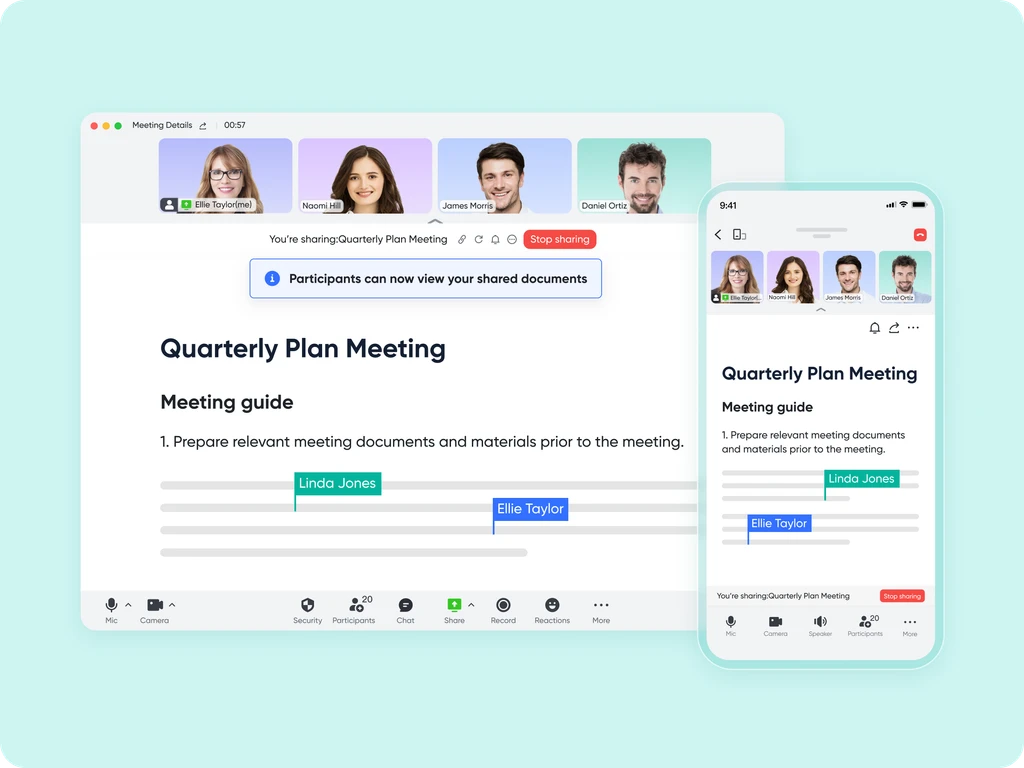
Leverage the potency of in-call document sharing, intelligent meeting minutes, and mobile-optimized features to enhance productivity collaboratively, irrespective of your location or schedule.
Seamlessly collaborate in real-time, across any device
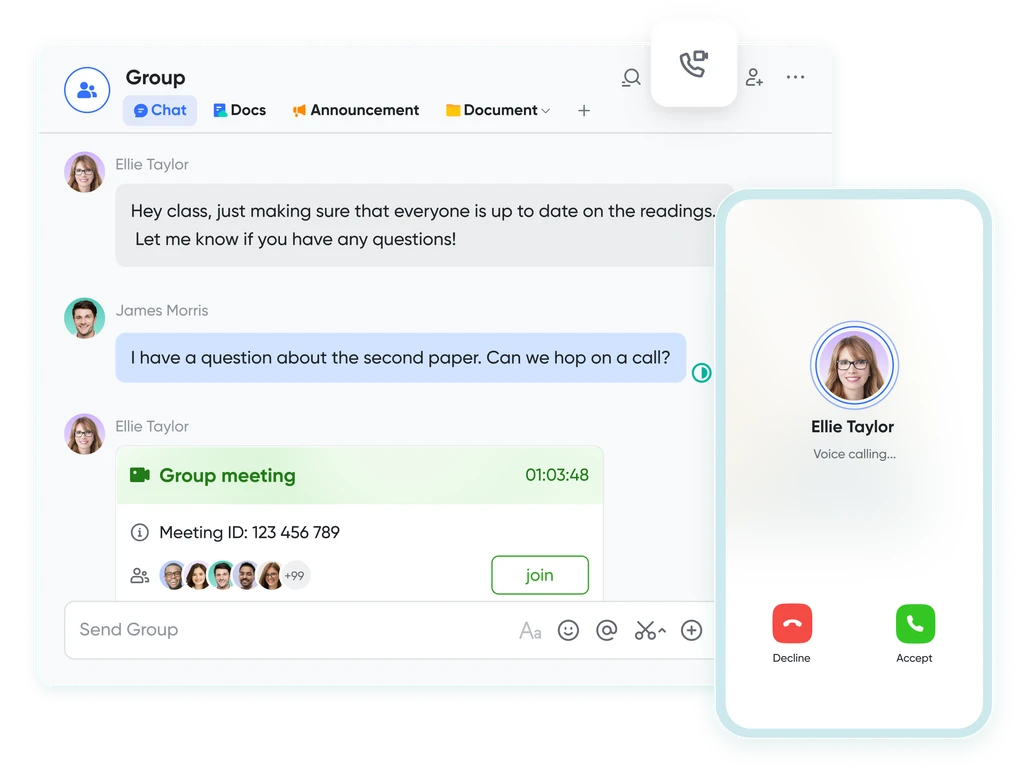
Share live documents instead of just screen views. Participants can navigate and edit simultaneously within the video call window, even while on the move.
Shift your focus to engagement, not note-taking
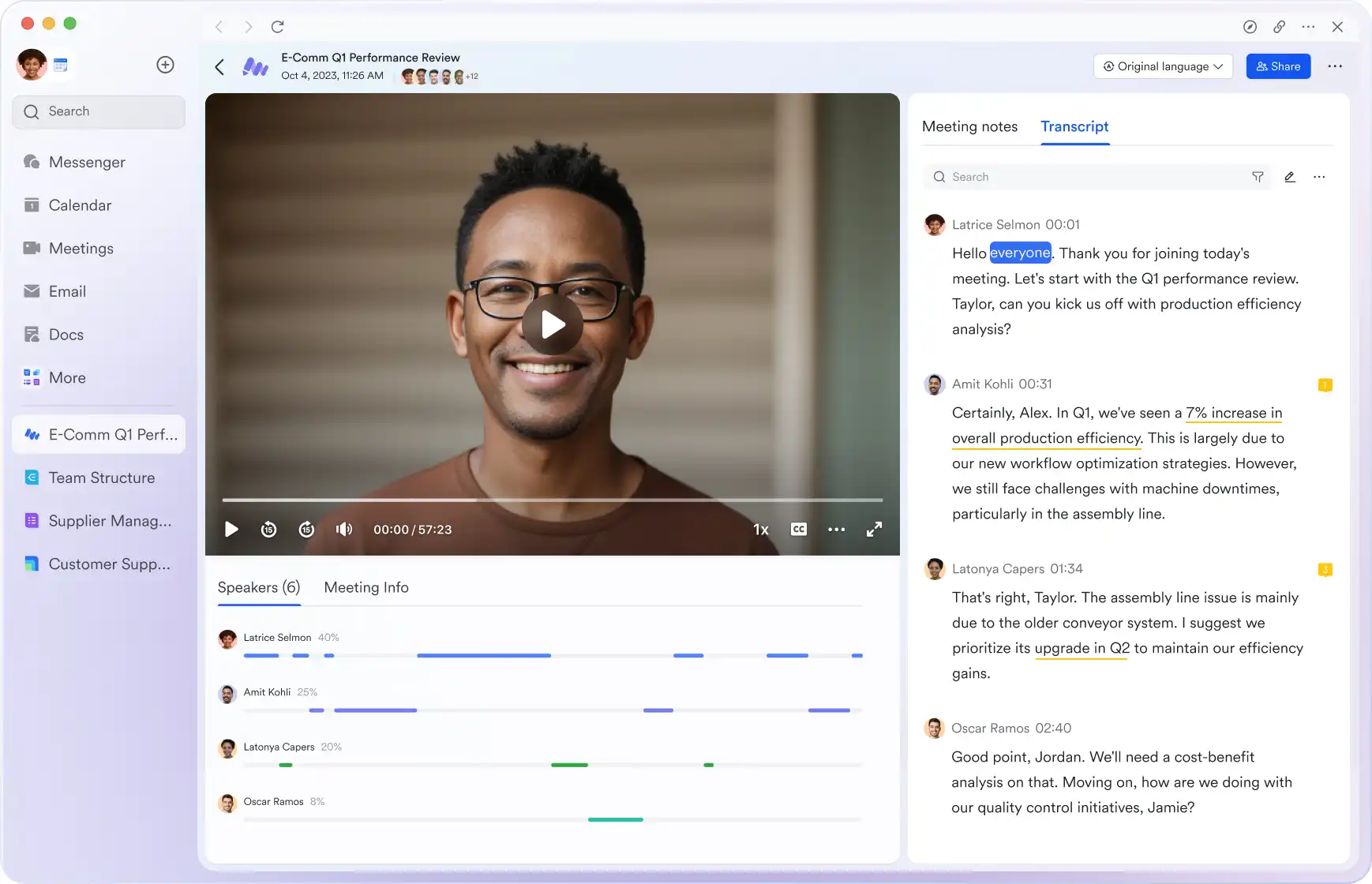
Lark Minutes automatically converts video meetings into transcripts, facilitating easy viewing, searching, and collaborative editing. Stay in the loop asynchronously, even if you can't attend the live meeting. Lark Minutes for meeting minutes support translation into 10+ different languages.
Break language barriers in communication
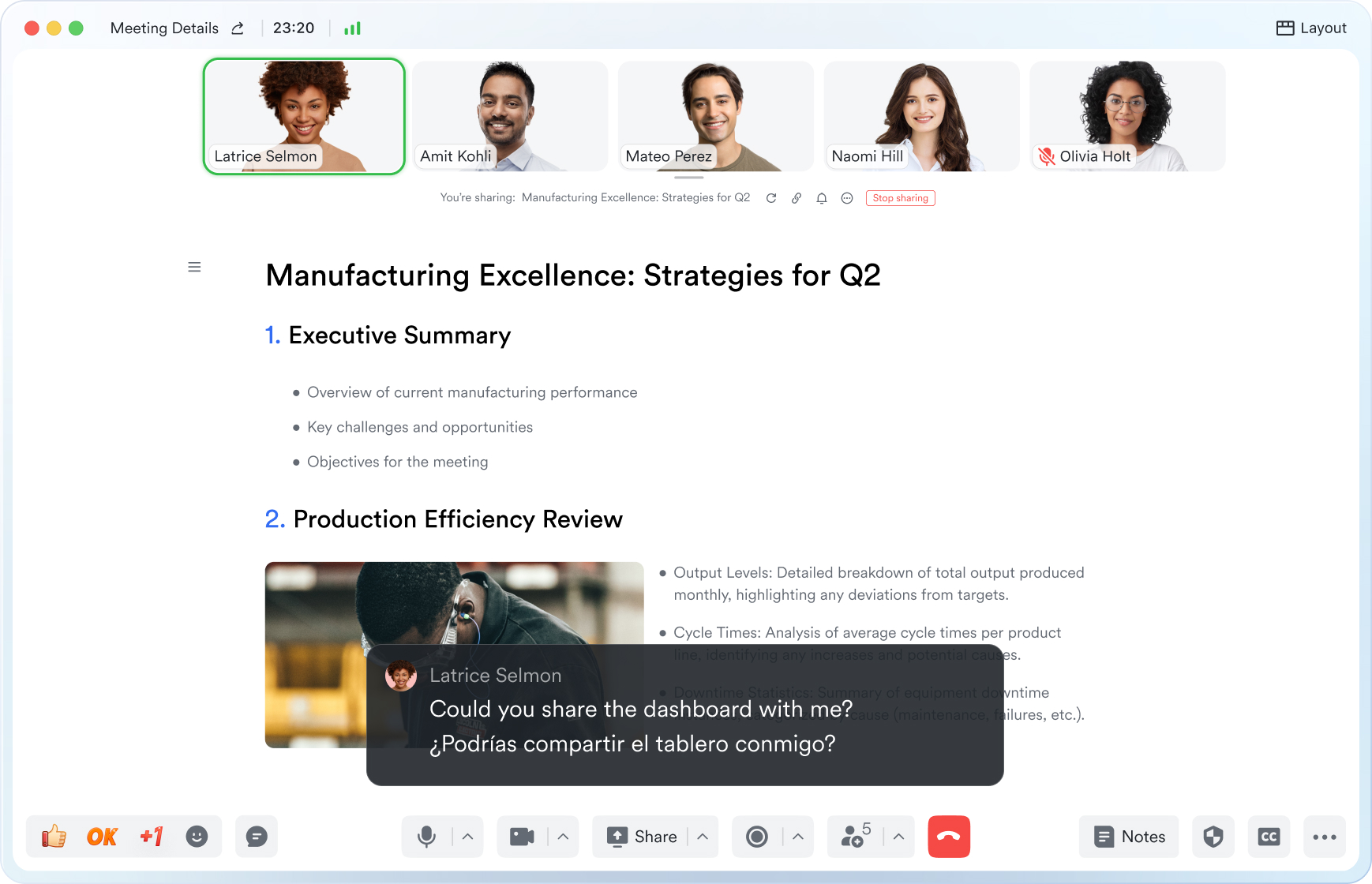
Lark Meetings provide real-time translation for subtitles, allowing individuals from diverse backgrounds to express themselves in their native languages. Ensure every voice is heard, regardless of geographical location. Live subtitles currently support translations from English, Chinese, and Japanese to 10+ different languages. See more translation feature in Lark.
Connect with larger audiences
Host dynamic online meetings and events accommodating up to 1,000 participants, with the flexibility of up to 50 breakout sessions for intimate group discussions within the larger meeting context. Try more Lark features for free.

